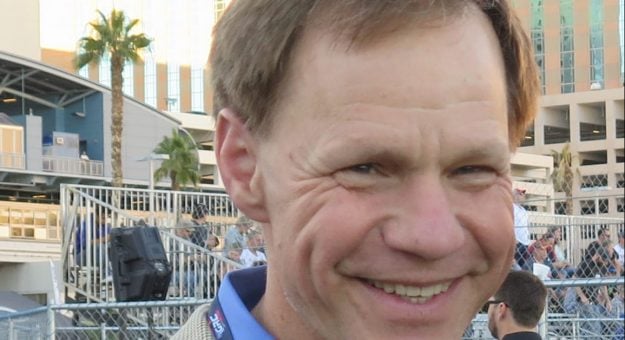WILMETTE, Ill. — Motorsports is about experimentation — a process of trial and error.
On and off the track — trying something different is part of the equation. In this month’s column, we’ll examine NASCAR’s inaugural Chicago Street Race, which was run July 1-2 through the streets around Grant Park.
The Windy City has a long history of racing.
Recognized as the first organized automobile race in North America — The Times Herald Motorcar Contest — took place on Nov. 28, 1895. Below-freezing temperatures and an early season snowfall of 12 inches made the route very challenging. Eleven vehicles started and only two finished.

The winning car completed the 54-mile round trip from Hyde Park to Evanston and back in just under 8 hours.
Soldier Field hosted racing from the 1930s to the ’60s. The original track had a cinder surface, followed by a board track, a dirt oval and a paved oval. During the 1950s, weekly stock car shows were promoted by legendary showman Andy Granatelli and many were won by “Tiger” Tom Pistone. The NASCAR Cup Series even ran a race there.
Northwest of the city, a road course existed during the 1960s. Meadowdale Int’l Raceway was patterned after European circuits. It had a steep 180-degree curve, known as the Monza Wall. The history of the track is carried on by the Midwest Racing Preservation Ass’n with a car show held each September.
Heading into the Chicago Street Race weekend, there were many questions and opinions surrounding the event.
The motorsports community was intrigued since open-wheel cars and sports cars have a storied history of racing on temporary circuits. Stock car racing on a street course was an unknown quantity, but NASCAR’s successful events on a temporary oval in the L.A. Memorial Coliseum provided confidence that it could be done.
Large cities are a unique mix. Politics is front and center — many times a contact sport. Discussions around the event negotiations were not always transparent and combined with a change of administrations in the mayor’s office, kept the media occupied.
Event logistics and operations were top concerns for local residents. Set-up and take-down closed streets, which impacted the daily routines of many. Noise was addressed by requiring the race cars to utilize mufflers.
Weather threw a curveball that affected everything during the race weekend. The race teams were generally prepared with the proper equipment — tires, wipers, etc. Spectator amenities were challenged but adjustments were made to keep fans dry and concessions flowing.
Safety and security are key. Keeping the racing on a street circuit moving after an incident takes coordination. Without a formal garage area, the mobility of spectators among the haulers was a balancing act.
NASCAR got the races in under “extenuating circumstances.” The Xfinity Series race became official before the typical halfway point minimum and the Cup Series headliner ran less than the full distance. Planned concerts and entertainment were canceled.
In the end, the rain moved on, the pavement dried and the racing delivered an exciting finish with not only a first-time NASCAR winner, but a first-time NASCAR racer taking the checkered flag.
The views of the lakefront and skyline were priceless, and the television rating was one of the highest marks of the season.
The future of the Chicago Street Race is under discussion. The original agreement was for three years with several opt-out clauses. Both parties can mutually terminate the deal without penalty by giving 180 days’ notice. NASCAR can cancel the contract with a substantial fee.
Overall, the event received favorable reviews, and there is optimism it will be back for many years to come.
This story appeared in the August 2, 2023 edition of the SPEED SPORT Insider.

